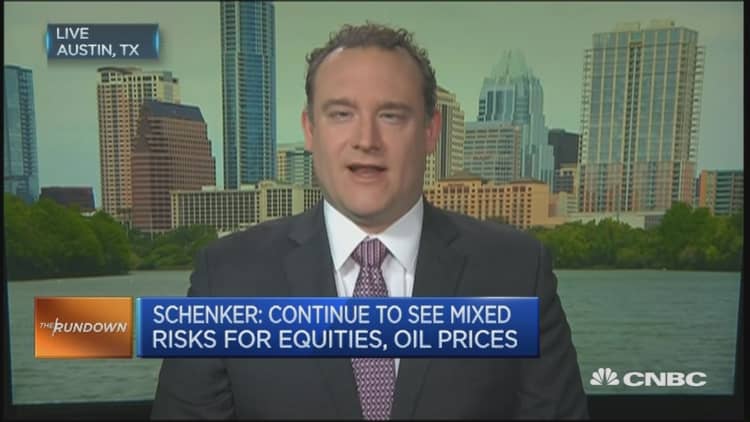
U.S. equities have stormed ahead since the election, but at least one analyst has warned that the rally may stumble.
The rally since Donald Trump's surprise win of the U.S. presidential election has been stark. The on Tuesday hit its 17th record close since the U.S. election on November 8, with the index coming within 13 points of touching 20,000 for the first time.
But Jason Schenker, president of financial market research firm Prestige Economics, told CNBC's "The Rundown" on Wednesday that the rally could run into serious headwinds in the first half of 2017.
"Some of the reason equity markets are up is because of expectations of improved, lower tax rates for corporates next year," Schenker said, citing Trump's election rhetoric promising corporate tax cuts.
But he added, "Part of the reason you've seen this big equity rally isn't just because of optimism about the year ahead of any Trump administration tax policies or spending, it's also because of a lot of concern about interest rates and government debt going forward."
Schenker said money was rotating out of bonds and into equities on concerns that Trump's rhetoric of increased government deficit spending, combined with tax cuts, will accelerate the national debt.
"The U.S. government will have to sell bonds at an accelerated pace at higher interest rates in order to attract those funds and that's really bad for the bond market," he said.
He noted that the U.S. Federal Reserve would likely be working to counter any expansionary fiscal stimulus if it causes too much inflation.
At its meeting earlier this month, the Fed increased interest rates for only the second time in a decade, hiking by 25 basis points to a target range of 0.5 to 0.75 percent. That hike was well-expected by the market, but the Federal Open Market Committee (FOMC) surprised by sending smoke signals indicating that they now expect to hike rates three times in 2017, up from a previous forecast for two hikes.
Schenker said that the timing of policy could also make the first half of 2017 "dicey" for markets.
"You might have this optimism in terms of expectations of tax cuts and spending, but it's going to take months and months before those are turned into law and even more months thereafter before the money shows up in GDP (gross domestic product) and even further months after that before you see a multiplier effect," he said. "It could be six, nine or 12 months before you see an economic impact of fiscal policy stimulus, but in the meantime, you could see really these higher interest rates at the back of the curve because of a bond selloff and higher interest rates at the short end of the curve from the Fed because of inflation concerns weighing on growth."
—By CNBC.Com's Leslie Shaffer; Follow her on Twitter @LeslieShaffer1


